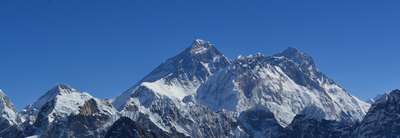Annapurna Conservation Area Project(ACAP)
ACAP was established in 1986 under the guidance of the King Mahendra Trust for Nature Conservation. The project encompasses the entire Annapurna range, more than 7600 sq km. In an innovative approach to environmental protection, it was declared a "conservation area" instead of a national park. A large number of people live within the protected region, but traditional national park practices dictate that few, if any, people reside within park boundaries. In an effort to avoid any conflicts of interest, ACAP has sought the involvement of local people and has emphasized environmental education.
ACAP projects include the training of lodge owners, with an emphasis on sanitation, deforestation and cultural pride. They have trained trekking lodge operators and encouraged hoteliers to charge a fair price for food and accommodation. ACAP encourages the use of kerosene for cooking throughout the region, and requires its use above Chhomrong in the Annapurna Sanctuary and on the route between Ghandruk and Ghorepani. ACAP is supported by a "conservation fee" of Rs 2000 that is collected from all trekkers who obtain trekking permits for the Annapurna region.Situated in the center of the Nepal Himalaya, this is a large region, occupying about 80km between the Marasyandi River in the east and the Kali Gandaki River in the west. In the north lies Mustang, the forbidden kingdom veiled in mystery until recently.
ACAP has encouraged the construction of toilets throughout the area; use them no matter how disgusting they are. ACAP has also made provision for the supply of kerosene in those parts of the conservation area where the use of firewood by both trekking groups and hotels is prohibited.
In Pokhara, visit ACAP's Trekkers Information & Environmental Centre next to the Hotel Lakeside. In addition to providing information, the centre sells iodine, solar battery chargers and other products that can help you to protect the environment while you are trekking. There is also a "trekkers meeting board" and a battery drop-off centre.







